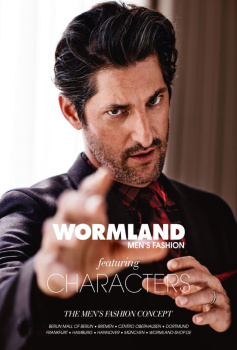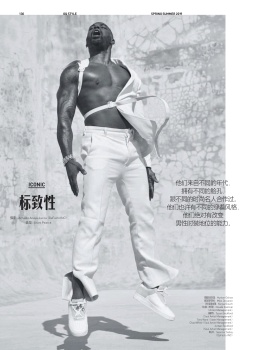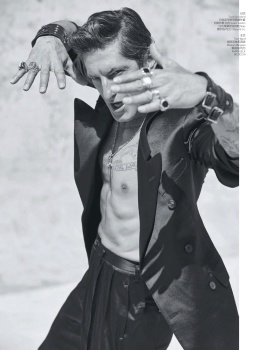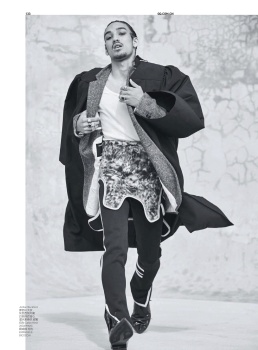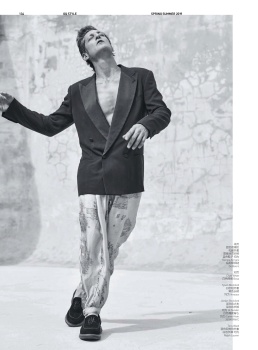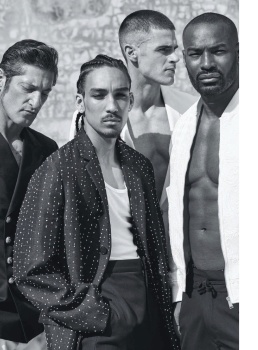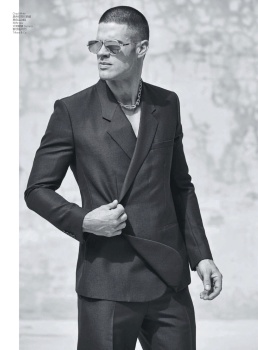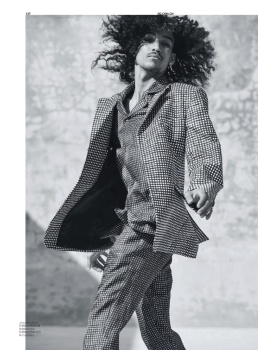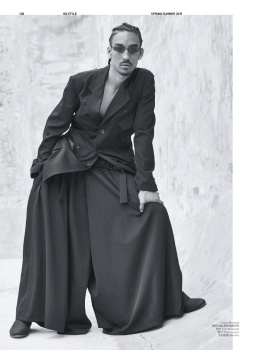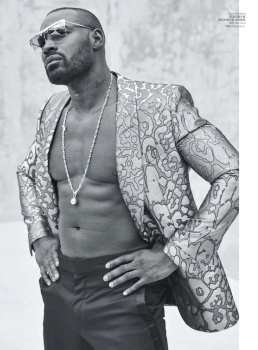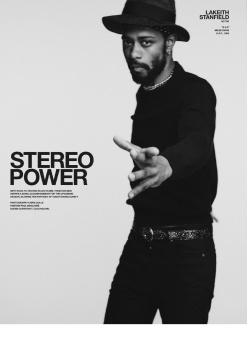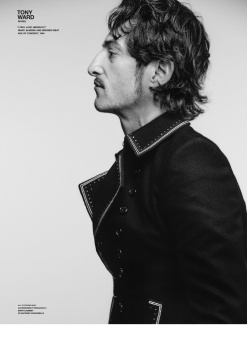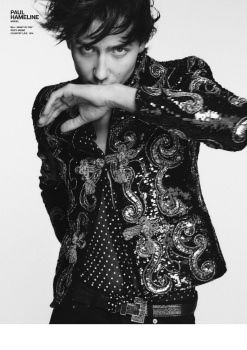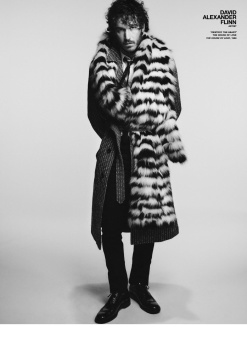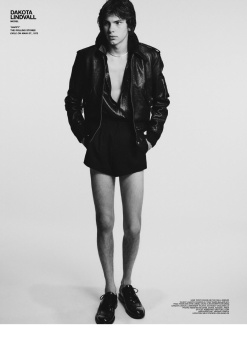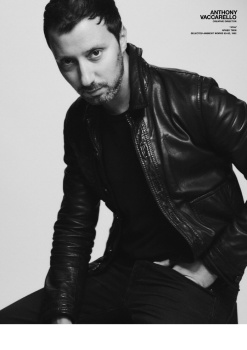You are using an out of date browser. It may not display this or other websites correctly.
You should upgrade or use an alternative browser.
You should upgrade or use an alternative browser.
Tony Ward
- Thread starter papa_levante
- Start date
Benn98
Well-Known Member
- Joined
- Aug 6, 2014
- Messages
- 42,582
- Reaction score
- 20,793
Benn98
Well-Known Member
- Joined
- Aug 6, 2014
- Messages
- 42,582
- Reaction score
- 20,793
MDNA
Well-Known Member
- Joined
- Jan 30, 2015
- Messages
- 2,745
- Reaction score
- 2,756
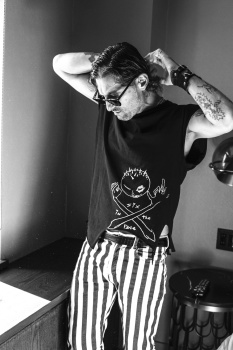

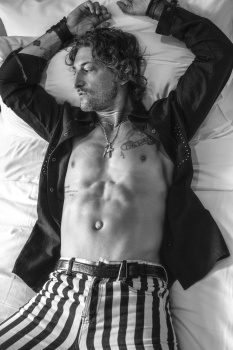
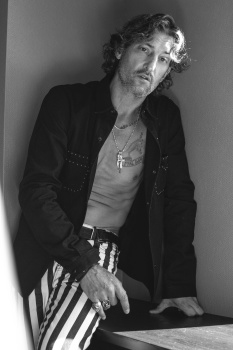
Photographer: Horacio Hamlet
Model: Tony Ward
models.comTony Ward Is Still Going Strong
by Jonathan Shia
It’s been nearly four decades since the legendary Tony Ward first embarked on what would become a surprising new career path as one of the defining male models of our time—and he shows no signs of stopping. With his rugged charm, it’s easy to understand why the Californian was an early favorite of iconic photographers like Steven Meisel, Steven Klein, Herb Ritts, and Karl Lagerfeld. He appeared in a number of music videos in the early ‘90s with his then-girlfriend, the pop superstar Madonna, as well as her notorious book Sex, which helped launch him to a new level of fame. Decades later, the spotlight has faded somewhat, but Ward, now 56 years old, continues to work regularly and still professes excitement every time he returns for another go in the industry. “I’m still hanging in there,” he laughs. “The little wispy grays are starting to come in, but I managed to keep myself alive.” He sat down with Models.com for a chat about longevity, optimism, and the changing face of the fashion industry.
Tell me a little bit about how you got your start in the industry.
I started in ’81 right after I got out of high school. I was 18 years old and I started out doing nudie pictures with hard-ons. My story’s the same as Mark Wahlberg’s in Boogie Nights. My history professor discovered me on my college campus and he’s like, “I can introduce you to these people. I’m going to make you a star.” I’m like, “Oh whatever, I don’t know,” and that was the beginning of it. By the mid-‘80s, I had a manager and we flew out to New York and I shot my first time with a legit fashion photographer, Bruce Weber, and he shot that pretty iconic image of me just outside of the studio and you see the Empire State Building behind. Right after that, I spent some time in New York and then right after that I moved to LA and met Herb Ritts and then it was just all happening.
What are some of the ways you think the industry has changed in the four decades since you started?
It transitioned a lot. The industry is so different. Everybody was a little bit crazy, there were drugs and fantastic things happening and fabulous people. Everybody was an artist. It was really different. The photographers were rock stars, like Herb and Bruce, Greg Gorman. I was really fit. I was a bodybuilder for like five years and that was my big dream, to be a bodybuilder and open a gym. That’s as far as my vision could go, but when I was introduced to modeling and acting and my manager at the time put me into acting and dance training, I stayed in front of the cameras.
Things in fashion have gotten a lot more commercial now.
That’s what I was alluding to and harkening back to, the artistry. Photographers really called the shots. Clients didn’t come to set so you didn’t have a bunch of people hanging out. Herb Ritts would be like, “Here’s three Polaroids, that’s all you get,” and that was it. That’s how it operated and you didn’t have any say. You trusted the artist, the hair, the makeup, the styling. They were geniuses and they were out there and they had vision and they were super crazy talented. There were so many genius people that would research. They would really study their art form and look into what they were doing and create new imagery. Their vision was to create iconic images because it was less commercial. It was less like, “Let’s sell a product.” It was like, “Let’s make beauty happen,” so it was quite cool that way. Today there’s a lot of skill, there’s a lot of talent out there, but it caters to designers because they only want you to be wearing all one brand. You got to serve the people, which is cool, it’s just different that way.
There’s so many models who try to become actors now. You starred in several iconic music videos and some films early on. How did you make the decision to try to shift over to acting?
My manager was really interesting. Back in the ‘70s, he actually managed Shields and Yarnell, a mime troupe. They were quite famous. They had a TV show and everything. He was their manager and then he became a really high-level advertising executive in Kansas City. A friend of mine in San Jose introduced me to him and he was like, “We’re going to f*cking do this for real. We’re going to make you something and not just a pretty face and a great body. We’re going to give you some skills and we’re going to get you out there and you’re going to learn what to do in front of the camera.”
What sort of response did you get from the film industry back then when you were starting out?
My dream before modeling kicked in was I thought I wanted to be an actor. I saw An Officer and a Gentleman, with Richard Gere crying and screaming and doing push-ups in the rain and that was it. I was like, “Ok I can do that,” and that was where I thought I was going to end up going. I knocked on that door and pounded on it and kicked on it and it just didn’t fit. The response was very different from modeling.
There was a big stigma about “You’re this and you don’t have a lot of skills and you don’t have any talent and you’re just a pretty thing, you’re a clothes rack.” Then there were these skilled actors with training and all that, so bridging that gap was really tough. Then the first film I do, I play a gay hustler in a very independent film and that was also not on my side as far as jumping into acting, but I’ve had some really good experiences with acting. I’ve been doing motion from the very beginning. I was doing music videos and commercials and all of that stuff a lot right in the early days of my career. That kept the fire in me going.
When I met Madonna, I became super, super serious. She really pushed me like, ”You should get on this,” and she opened some doors. My agent was great at the time and got me in to read for some really great films, but what was really crazy is I was reading against Christian Slater and Tom Cruise, all these really big young actors at the time, and I’m like, “I can’t compete, how can I compete?” This dude that played a gay hustler and is a model against these dudes, it was just not going to happen. It was fine and then I was like, “I’m done, I’m finished chasing it,” and as soon as I fired all my agents, a French fashion photographer who had directed a great film sent me a film that he had done and was like, “I have a really amazing part for you, will you do it?” So I had literally just quit like two weeks before and this guy contacts me, so I play a lead in this French-Canadian film and that was the best experience I had with acting. Afterward, I was like, “I’m good, that was cool.”
Anyone who tries either modeling or acting faces a lot of rejection. How did you learn to handle it?
I don’t know. It’s funny, I think you just get a steel skin. I used to go on auditions and I was just blown away. I’ve had people look at my book and throw it. I walked into a casting in Italy back in the ‘80s and somebody flung a model’s book down the hallway. All these models were going, “sh*t!” It was f*cking crazy, the egos were insane, super cuckoo, so you’re nervous like, “Ok how are they going to deal with me?” Once I went on a casting and I went back to my agency after and my agent was like, “You’re not going to believe what this woman said.” She’s like, “Don’t ever have Tony Ward come back into my office ever again. He looks like a r*pist, he’s horrible, he’s the ugliest thing in the world.” You have to just weather that stuff like, “Alright, not everybody’s going to love me, but that’s ok. I’m fine with that.”
Modeling is not a career known for its longevity. What do you think has helped you remain in the business for so long?
In the beginning, I was a young, crazy kid. Every penny I got, I threw away. I didn’t buy fashion or anything like that, but it was just about living. I bought my vehicle, I took my friends out for meals and had a decent place to live and flew around the world and I didn’t think about saving money. It was like, “Just live, just enjoy it,” meeting people and traveling to places. How many people get to go to exotic new lands and hear different languages? That was the blood that kept pumping through me. I was really blessed. I was really lucky. I stepped away sometimes from the industry, but my agent would call me back like, “Ok do you want to paint houses for a living or do you want to make 20 grand?” I’m like, “Alright you twisted my arm, I’ll come back,” so that was always there. I’ve never disappeared if there was money to be made. It’s been over 35 years that I’ve been doing it and you’re tired, you question, “Do I want to do this? Do I need to do something else with my life? Should I or do I want to?” and you just keep going. I just kept going and I was fortunate that I had really good relations with certain people and photographers and I always was able to come back.
Similar Threads
Users who are viewing this thread
Total: 1 (members: 0, guests: 1)

